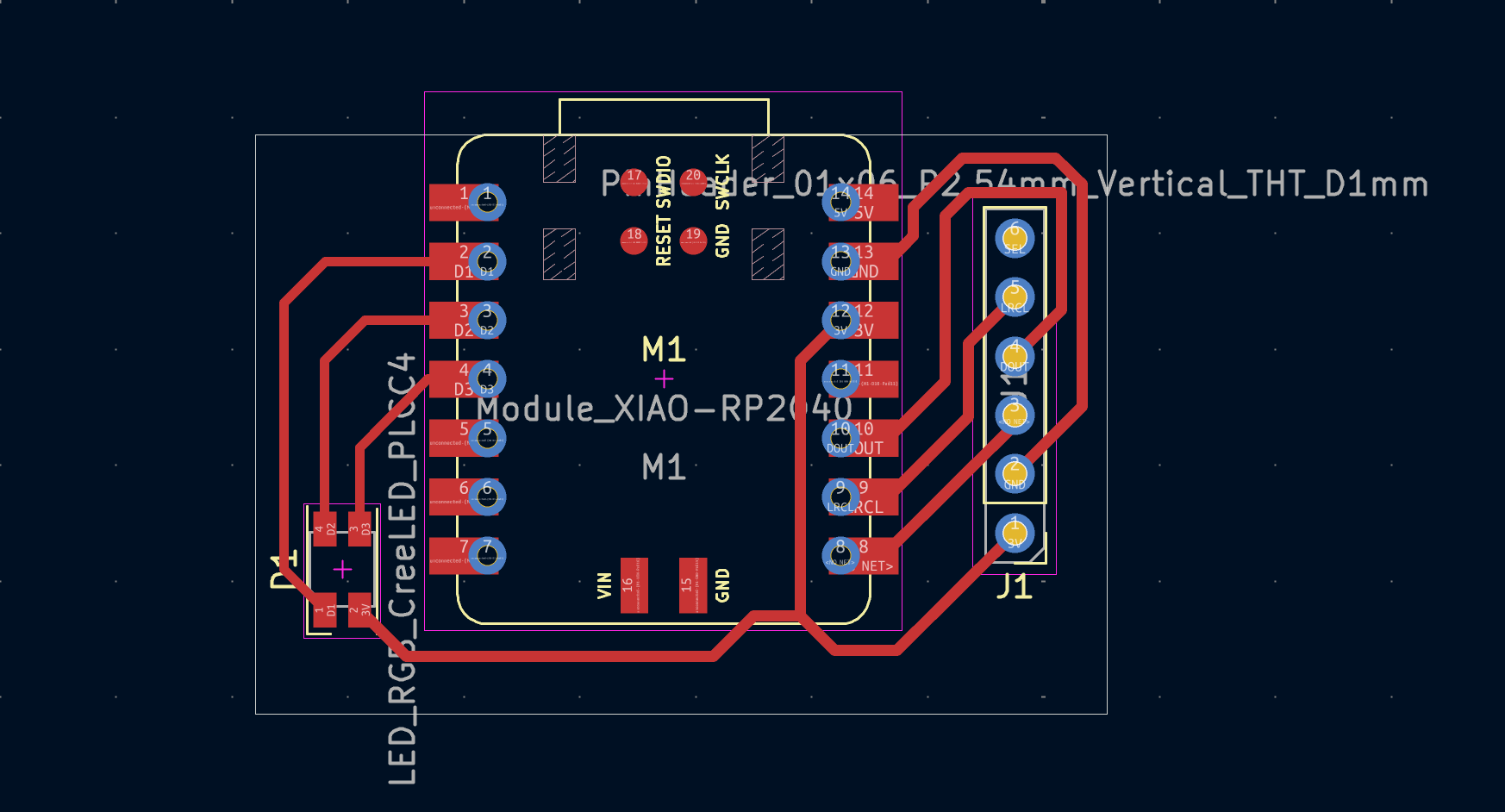Aijia Yao
MIT EECS • HTMAA 2025
Week 8 - Input Devices
October 2025
This week was mainly about Input Devices.
What I Did
- Follow this link to the group assignment.
- Design and tested an audio input device using a microphone and Arduino.
- Integrated the audio input device with a simple machine learning model for voice recognition, [still debugging].
PCB Design for Audio Input Device
- Designed a custom PCB to integrate the microphone and Arduino for the audio input device.
- Utilized KiCad for schematic capture and PCB layout design.
- Ensured proper placement of components for optimal signal integrity.
Testing and Integration
- Assembled the PCB and connected the microphone to the Arduino.
- Conducted tests to verify the functionality of the audio input device.
- Integrated the audio input device with a simple machine learning model for voice recognition, [still debugging].
(Wait till the 0:18 switching from Aria to Var. 1. a 1 Clav.!!!!!!)


